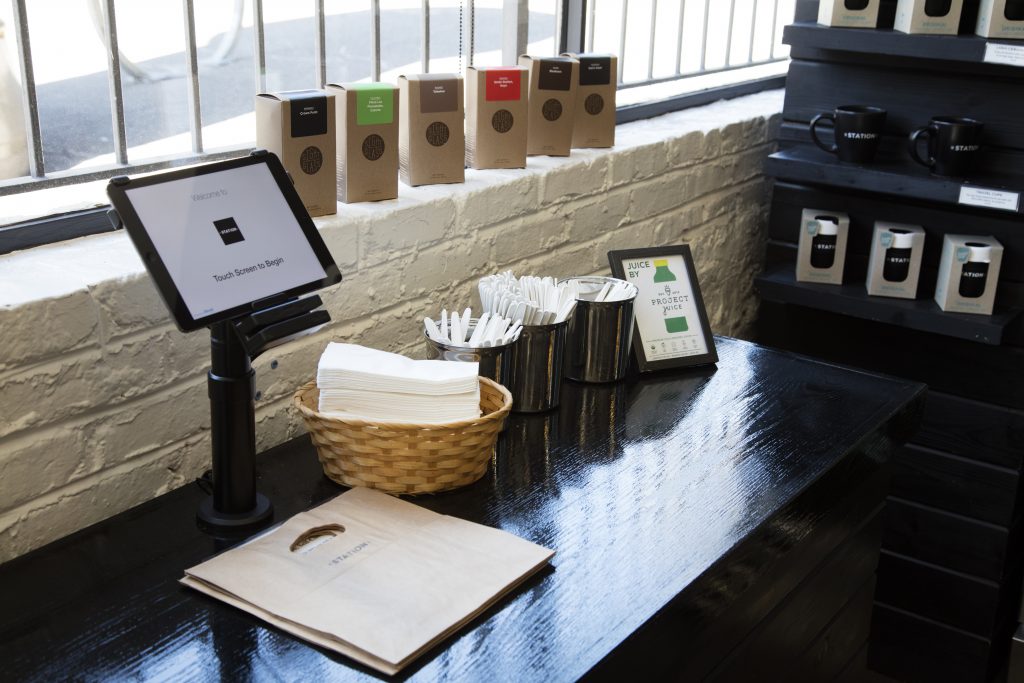Call Sales: +1 (833) 437-3835
Call Sales: +1 (833) 437-3835
Revel | October 18, 2016 |

There isn’t anything quite like a great combo; the obvious example being peanut butter and chocolate (or really peanut butter and anything - apologies to the allergic). When you find a combo that works and improves on something that you already love, it can feel like magic. When a coffee shop that sells fancy sandwiches and face wash and beer opens up around the corner, you may start to wonder where this coffee shop has been all your life.
It may be that you’ve already noticed this trend for independent, brick-and-mortar shops to bring a market together with a quick-service specialty food or beverage. There are probably a few explanations for the rise of hybrid retail. The most probable is that with web sales predicted to account for 11% of total transactions by 2018, compared to 8% percent in 2013, is that businesses are becoming more inventive about how to attract customers to come into their physical shops. The other reason may be that people just like the convenience of killing two birds with one stone whenever possible. With everyone feeling ‘busier than ever’ these days, the hybrid shop certainly meets the demands of modern life.
The hybrid-style shop gives retail, grocers, and quick-service restaurants some food for thought. If you are thinking of ways that you can increase traffic and revenue to your shop, you may want to read on to gain insight from the forward-thinking hybrid business.

| See Also: Maximizing Your Cafe's Self Serve Kiosk |
The Grocerant and the Grab ‘N’ Go trend
Whole Foods Market was one of the first major grocery stores to successfully identify and meet the needs of busy shoppers that wanted their dinner fully prepared with their large hot bar, deli, coffee drinks, and grab-and-go meals. Premium locations even have a bar or brewery and a bistro where their patrons can dine-in. Similarly, Trader Joe’s commodified the “Grab ‘N’ Go” grocery trend with a variety of meal options in their refrigerated section. Many locations even offer outdoor seating when there is extra space. Now these grocery-restaurant hybrids have a term: the “grocerant.”
Services like Blue Apron, where all the ingredients for a preset recipe delivered directly to you, are an indication that people want to save time on meal preparation. They may have time to shop or time to cook, but not to do both. Perhaps people have become so busy that they desire options to break up the monotony of ordering Chinese take-out and pizza delivery.
Another possible explanation for seeing an increase in grocerants could be that consumers don’t want to have to think about what they want and just want to see a large variety of quick options. Grocerants are more likely to have healthier options, like a variety of packaged salads, wraps, or grain dishes compared to most fast food options. Pre-made foods or deli/hot bar items are offered at more affordable price points, and consumers don’t have to tip or pay a delivery fee.
If you have a convenience market or grocery store, making room for pre-made foods and a deli case are sure to add to your revenue stream.
Meeting the demand for unique customer experiences
With the availability of highly customizable technology now, customers have become increasingly sophisticated in their shopping habits and expect a lot. Instead of brick and mortar businesses seeing this as a challenge, it’s a good time to embrace the shopper of the digital age and get creative. For small businesses, it might seem difficult to offer a consistent product in an approachable, yet unique way so that it's unlike your competitors’ offerings. But if you see it as an opportunity to incorporate a few of your interests or hobbies, then you are on the right track.
Take, for example, the struggle of the modern video store. With the boom of on-demand entertainment through platforms like Netflix, Roku, Apple TV, and even cable and satellite TVs, as well as theaters reimagining the movie-going experience, local video stores have almost completely disappeared. Video stores that have managed to survive the market shift have done so by getting creative by streamlining their spaces to include a coffee bar or gift shop space. If you have extra space, consider using it to your advantage to pursue additional income. Creating a venue space for comedy or live music can increase the potential for revenue from mornings and afternoons to a full 12 hours.
On the other end of the spectrum is market saturation. Coffee shops have become so ubiquitous that owners must clearly indicate their competitive advantages. By partnering with a bike shop or laundromat, some have increased service offerings and created additional ways to drive traffic to their locations. Others have capitalized on consumers love of coffee, in addition to a love of wine and craft beer. You don’t need to choose just one offering and your customers will appreciate that they can trust your taste in all beverages. Coffee shops are an easy example as just about any hobby or interest pairs well with being able to grab a cup of Joe.
| See Also: Building Business with CRM |
Retail and quick service shops aren’t the only ones to embrace the hybrid model. Restaurant owners are creating their own versions of a grocerant, often with a market attached so that customers can buy their favorite ingredients from the restaurant to enjoy at home. The popularity of the hybrid shop or restaurant certainly indicates that making room for more can generate more revenue, as well as increase brand awareness.
Regardless of what your primary pursuit is as a merchant, to stay ahead of the competition—both local and digital—long-term survival and growth depends on your ability to adapt to market changes and get creative to keep customers coming back time and again.